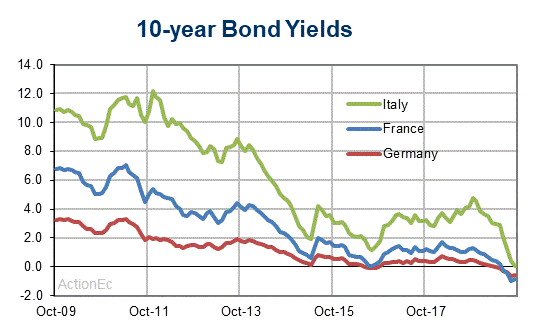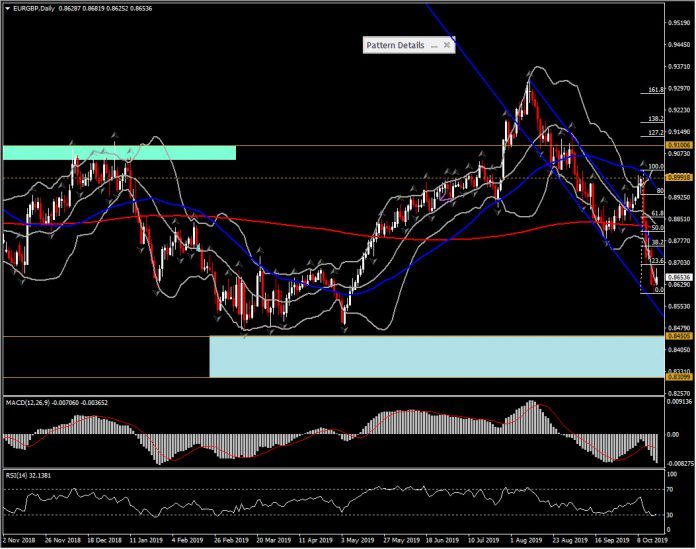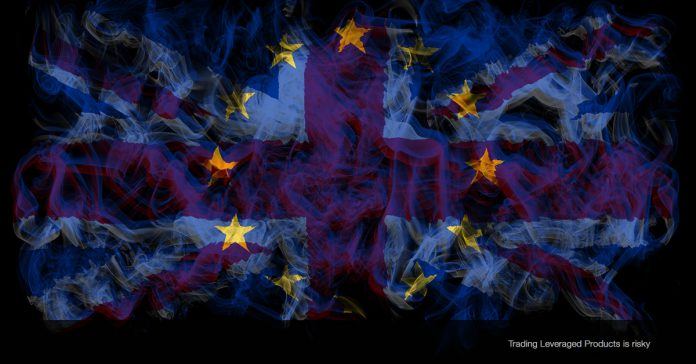Brexit headlines have been dominating European markets, as Germany is already facing technical recession.
Just now, EU Commission President Juncker said in a twitter statement that the EU and the UK have reached a “fair and balanced agreement” and that he recommends that heads of state endorse this deal. Bund and gilt yields jumped 3.9 bp and 5.6 bp respectively so far.
Next……..
However as a Guardian journalist has tweeted that, according to an EU official, that even if a deal is agreed now, “ratification by October 31 would be impossible.”
Another source cited to be a EU official told a Telegraph correspondent that:
“Maybe we will have a deal and maybe not. But one thing is clear; if we are to have a deal it will be a legally operational solution preventing a hard border on Island of Ireland, protect good Friday agreement, all Ireland economy and integrity of the Single Market.“
One key sticking point is the issue of Northern Ireland political parties giving consent to the customs proposals, which is a major concern for the EU given the rejection of the proposals by the DUP. One thing seems clear, and that is the EU isn’t budging on its red lines. A delay in Brexit is looking likely.
The UK government is obliged to ask for a 3-month extension, as stipulated in the newly-minted Benn bill, in the event that a deal hasn’t been reached by October 19. The Brexit Secretary, Stephen Barclay, confirmed yesterday that PM Johnson will send a letter to Brussels seeking a three-month extension — i.e. comply with the law — in the event a deal isn’t made in time, marking a step-down from Johnson’s hitherto insistence that the UK will be leaving the EU on October 31 regardless.
If there is a delay, then focus will shift to a general election. If, on the other hand, a deal does materialize, then it would face the hurdle of a parliamentary vote in the UK, which would be a close call, and if rejected, then a Brexit delay will happen.
In the Eurozone meanwhile…….
downside risks to the economic outlook are mounting and against that background markets are hoping that politicians finally find a way to move forward.
Lower oil prices see headline inflation slide again: Final German inflation data for September confirmed the headline rate at just 0.9% y/y, with the breakdown highlighting that base effects from lower oil prices were the main reason behind the deceleration in the headline rate. Final French numbers didn’t hold any surprise, and left the overall Eurozone rate on course to be confirmed at 0.9%.
German exports continue to decline amid US-Sino trade tensions and Brexit: Exports declined in a monthly basis but remain up 0.4% y/y in the first eight months of the year, as the nominal trade surplus is shrinking. It remains too high for Trump’s liking though and the risk for Europe is of course that a truce on the US-Sino trade front will mean additional focus on lingering trade tensions with the EU. UK, on the other hand, sliding down the list of Germany’s most important trade partners to the 7th place, after still being number five last year. German exports and imports to and from the UK dropped in the first seven months of the year. Exports have been declining ever since the Brexit referendum, driven to a large extend by a drop in German exports of cars and car parts, although this may also be related to “Diesel-gate” and other problems in the German automobile sector.
Germany’s ZEW investor confidence: The expectations reading is back to -22.8 from -22.5, highlighting that a large majority of respondents remains pessimistic about the outlook.
As Germany expected to ditch “black zero” if growth outlook worsens. Germany’s focus on a balanced budget has already been watered down by a new focus on “green investment” to tackle climate change. However it seem that the Finance Ministry is readying plans to respond to an economic hit.
Officials however are still holding that the technical recession that we are facing in Germany right now could be confirmed as a shallow contraction once the Q3 GDP numbers are out.
However, the risk clearly is that this turns out to be too optimistic and that the slowdown will be longer and more pronounced than currently expected. Against that background, long bond yields are likely to continue to nudge higher, either because fiscal spending will increase as growth weakens, or because the economic outlook improves if and when Brexit uncertainty and US-Sino trade tensions are being resolved.
EURGBP
EURGBP, after a drift of more than 420 pips the last week, finds some floor at 0.8600 since NY session yesterday, amid a weaker Pound on the news that the Northern Ireland’s DUP will not support the plan. The reversal higher looks temporary, as the asset remains well below 5- months Support at 0.8785 (now converted into Resistance) and below all three dailly MAs (i.e. 20-, 50- and 200-day SMA) as Bollinger Bands continue to extend southwards. Momentum indicators are negatively configured with RSI at 32 whilst MACD lines confirmed a bearish cross. These points to heightened selling pressure. There is a burgeoning drift of five bearish daily candles meaning the Resistance at 0.8715 is a key near term gauge for a potential reversal , while an access of 0.8600 Support level could be a sell zone. A close below 0.8600 opens further decline to 0.8300-0.8450 area.
Disclaimer: Nothing in this communication contains, or should be considered as containing, an investment advice or an investment recommendation or a solicitation for the purpose of purchase or sale of any financial instrument.
Recommended Content
Editors’ Picks
EUR/USD holds steady near 1.0650 amid risk reset

EUR/USD is holding onto its recovery mode near 1.0650 in European trading on Friday. A recovery in risk sentiment is helping the pair, as the safe-haven US Dollar pares gains. Earlier today, reports of an Israeli strike inside Iran spooked markets.
GBP/USD recovers toward 1.2450 after UK Retail Sales data

GBP/USD is rebounding toward 1.2450 in early Europe on Friday, having tested 1.2400 after the UK Retail Sales volumes stagnated again in March, The pair recovers in tandem with risk sentiment, as traders take account of the likely Israel's missile strikes on Iran.
Gold price defends gains below $2,400 as geopolitical risks linger

Gold price is trading below $2,400 in European trading on Friday, holding its retreat from a fresh five-day high of $2,418. Despite the pullback, Gold price remains on track to book the fifth weekly gain in a row, supported by lingering Middle East geopolitical risks.
Bitcoin Weekly Forecast: BTC post-halving rally could be partially priced in Premium

Bitcoin price shows no signs of directional bias while it holds above $60,000. The fourth BTC halving is partially priced in, according to Deutsche Bank’s research.
Geopolitics once again take centre stage, as UK Retail Sales wither

Nearly a week to the day when Iran sent drones and missiles into Israel, Israel has retaliated and sent a missile into Iran. The initial reports caused a large uptick in the oil price.


